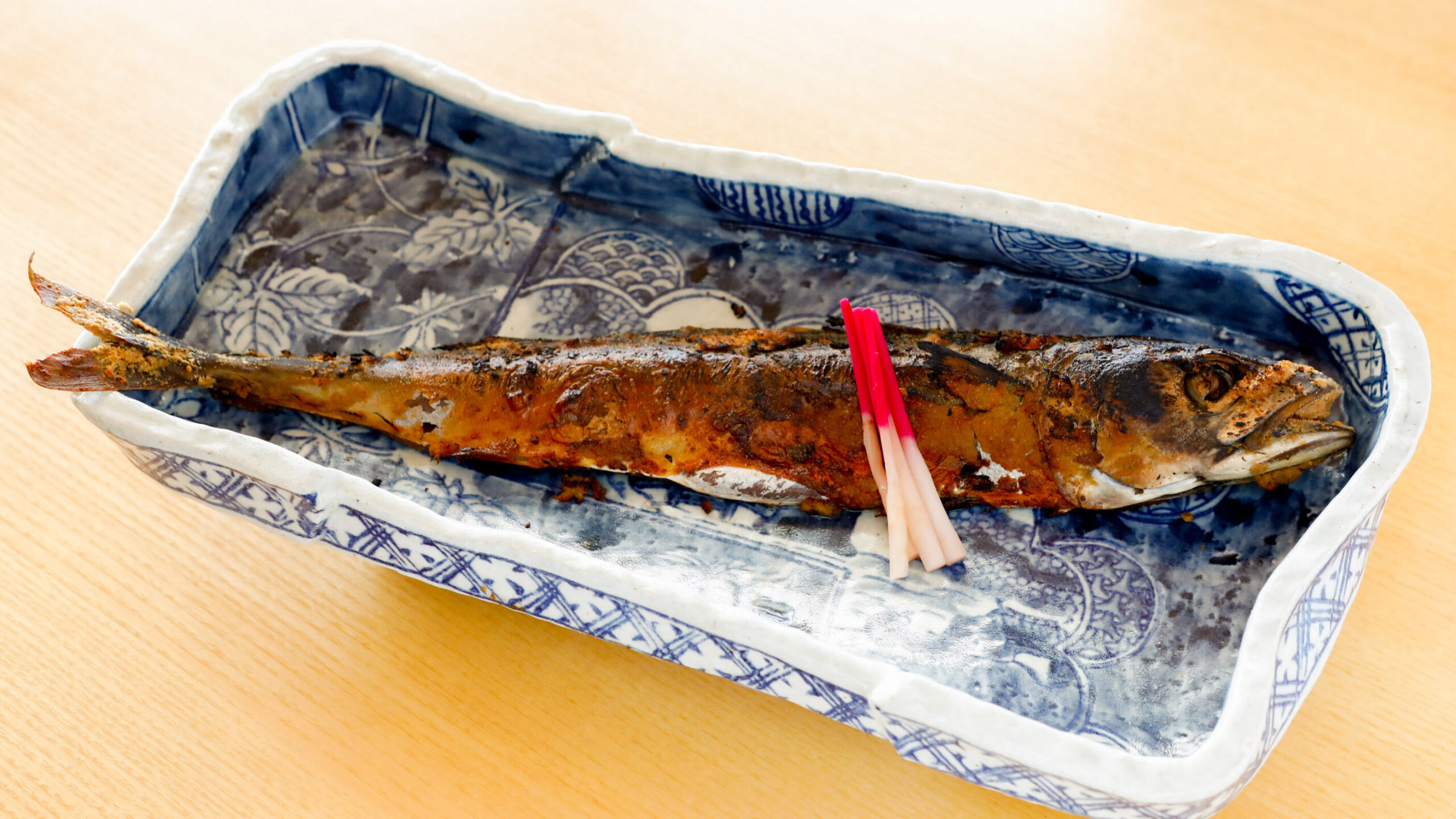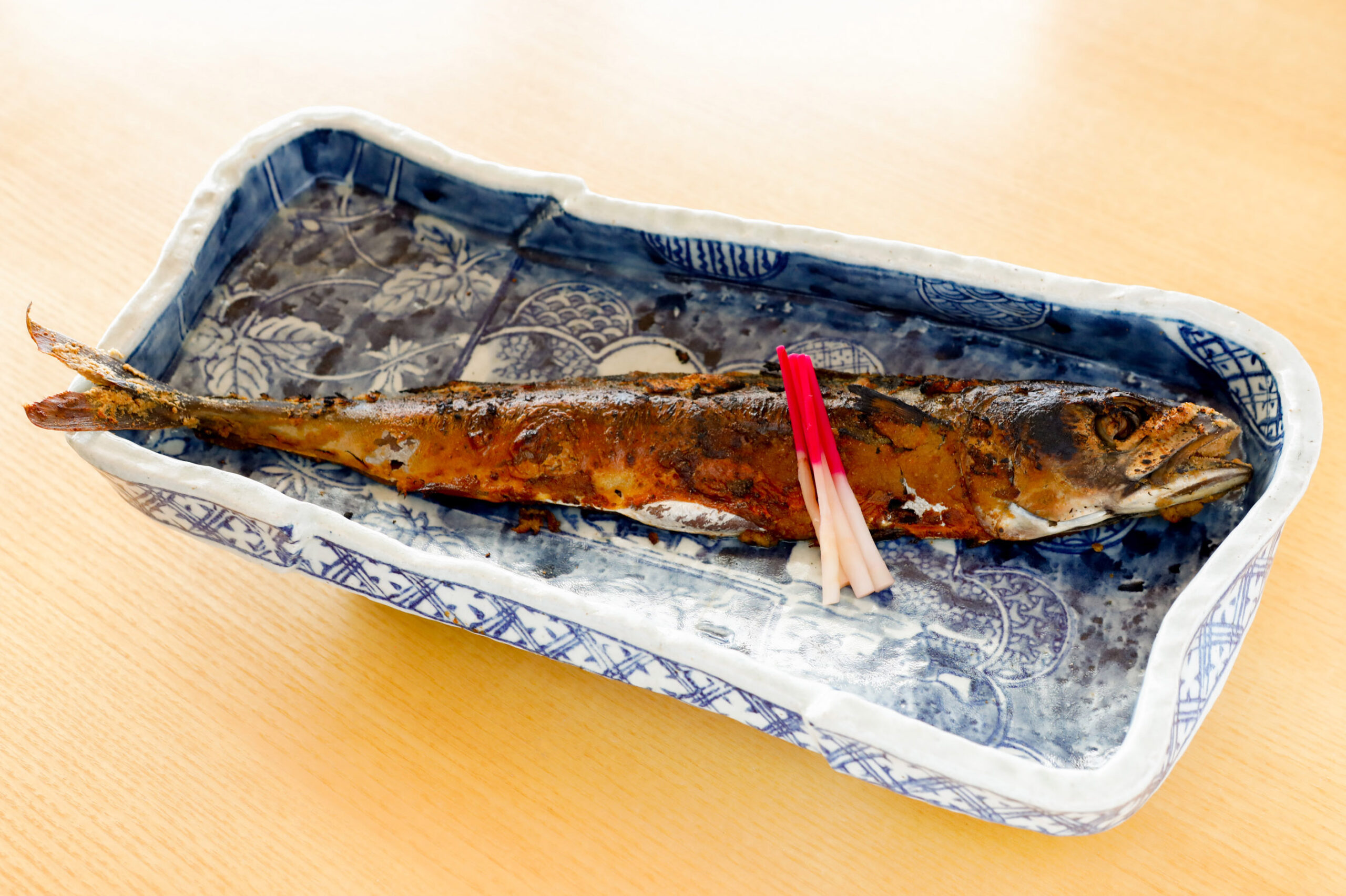
Have you ever tried a dish that’s been preserved in rice bran for months? In Fukui Prefecture, particularly in the Wakasa region, there’s a unique culinary tradition called “heshiko.” It’s a way of taking fish, most commonly mackerel, and pickling it in salt and then fermenting it in rice bran. This process not only preserves the fish, which was crucial for surviving the harsh winters in the past, but also gives it a distinct, intense flavor that’s enjoyed in various ways today. It’s a testament to the ingenuity of the people who developed this technique centuries ago.
Dish Name: Heshiko
- Region / Location: Fukui Prefecture
- Primary Area of Tradition: Wakasa region (including Kono district in the northern part of the prefecture)
- Main Ingredients: Mackerel (saba), salt, rice bran (konuka), chili pepper
How It’s Eaten / Served
After being pickled in salt and rice bran for about half a year, heshiko develops a strong salty and umami flavor, somewhat similar to smoked fish. Before eating, the rice bran is usually scraped off, and the heshiko is cut into appropriate sizes. It’s often lightly grilled, which enhances its aroma and flavor. Besides grilling, heshiko is also enjoyed in ochazuke (rice with hot green tea), as a side dish with sake, as a filling for rice balls (onigiri), and as a sushi topping. More recently, it has found its way into modern dishes like fried rice, pasta, and pizza, where it’s used in a way similar to anchovies. Freshly prepared heshiko can even be eaten as sashimi.
Cultural Background and Preservation
Heshiko is a traditional food of the Wakasa region and the coastal areas of Echizen. It originated as a method to preserve fish for long periods, especially to survive the tough winter months, providing a valuable source of protein. Its history dates back to the mid-Edo period. There are a few theories about its name, one suggesting it comes from the fishermen’s term “hesshikomu,” meaning to press fish into a barrel, which was then shortened to “heshiko.” Another theory proposes that it derives from “hishio,” the salty liquid that comes out during the salting process. While mackerel is the most common fish used, heshiko is also made with sardines, squid, and pufferfish.
Historically, Wakasa was known for its seafood, which was transported to Kyoto via the “Wakasa Road.” Among the various seafood, salted mackerel was a primary product shipped to Kyoto, leading to the road being recently nicknamed the “Mackerel Road.” While home production of heshiko has decreased, it remains a popular local specialty and souvenir.
In Mihama Town, efforts are being made to brand and improve the quality of heshiko through the Mihama Heshiko Association. They even created a PR character named “Heshiko-chan” in 2006 to promote its history and image. Local elementary schools also conduct extracurricular classes where students learn how to make “nare-zushi” using heshiko from community members.
In Obama City’s Tago district, a local initiative has established a workshop to produce and sell heshiko nare-zushi. They also actively share information about the region’s culture and food culture through their website and events, and they engage with local high school students to ensure the preservation and continuation of this culinary tradition.
Additional information:
- Rice bran (konuka): The outer layer of a grain of rice, separated during the milling process. It’s rich in nutrients and used in Japanese pickling for its unique flavor and preservative qualities.
- Umami: Often described as the fifth basic taste (along with sweet, sour, bitter, and salty), umami is a savory taste that is often associated with brothy or meaty flavors. It comes from the presence of amino acids like glutamate.
- Ochazuke: A simple Japanese dish made by pouring hot green tea, dashi, or hot water over cooked rice. Various toppings are often added, such as pickled vegetables, seaweed, and grilled fish.
- Sake: A Japanese alcoholic beverage made from fermented rice. It is often referred to as “rice wine,” although the brewing process is more similar to that of beer.
- Onigiri: Japanese rice balls, typically formed into triangular or cylindrical shapes and often wrapped in nori (seaweed). They can be filled with various ingredients.
- Sushi: A Japanese dish consisting of cooked vinegared rice (shari) combined with other ingredients (neta), such as seafood, vegetables, and occasionally tropical fruits. There are many different types and presentations of sushi.
- Nare-zushi: An older form of sushi where fish is fermented in rice for an extended period. The rice is often discarded, and only the fermented fish is eaten. Heshiko nare-zushi is a regional variation of this.
The information about regional cuisine featured on this website (Piggy's Grandma of Japan) is summarized and adapted from the Ministry of Agriculture, Forestry and Fisheries of Japan (MAFF) website, "Our Regional Cuisines"Additional commentary is provided based on the unique experiences and perspectives of the site's editors.
The copyright for the original content regarding regional cuisine belongs to the Ministry of Agriculture, Forestry and Fisheries of Japan.
The summaries and adaptations published on this site are intended for informational purposes only. Piggy's Grandma of Japan does not guarantee the accuracy or completeness of this information. For the most accurate and complete details, please refer to the original pages on the MAFF website.


